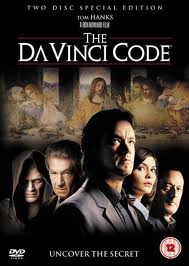Dan Brown
Readers will either love The Davinci Code or hate it. The story begins in the dark halls of the Louve, where the chief curator has been found dead and neatly laid in a cryptic fashion in front of the Mona Lisa. We follow the protagonist Robert Langdon through Italy, France and the United Kingdom, ultimately leading to a shocking ending that turns the reader’s perceptions of the world upside down.
For some, The Davinci Code is a fascinating work of fiction inspired by rumors of secret societies, complex puzzles and a treasure hunt across the European continent based on 2,000 years of Western history. Paced at a thrilling rate, the author Dan Brown takes liberty on historical facts and theology to create a truly exciting ride.
How the book will be enjoyed depends on what is expected from the reading experience. The book has been criticized for a dependency on pseudo-historical books such as Lincoln, Baigent and Leigh’s “Holy Blood, Holy Grail”, Picknett and Prince’s “The Templar Revelation”, and Margaret Starbird’s “The Woman with the Alabaster Jar”. These works have been ridiculed by the academic community, full of over-exaggerated assumptions and poorly constructed research design. Those in favor of The Davinci Code, however, point out that the novel is a what-if scenario that has no obligation to back up its claims with irrefutable evidence.
The writing style of the novel is also highly criticized. Dan Brown simply describes what is happening to the characters with little effort to reveal their motives in a clever way. The descriptions of the settings were less than impressionable. The writing style may also bother some readers. For example, the text is burdened with adjectives.
The Davinci Code is at best considered an entertaining thriller, and has enjoyed immense commercial success. However, readers will find little enjoyment if they are searching for inspiring prose or a serious theory surrounding religious history.

